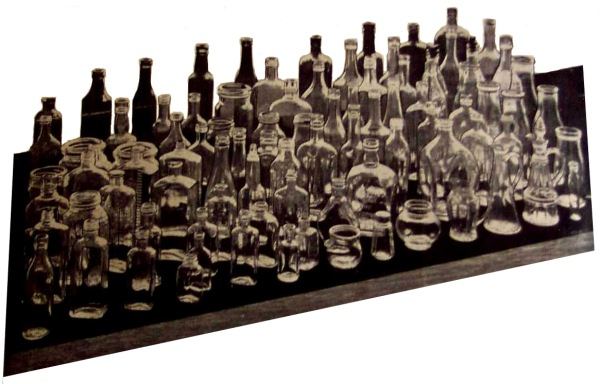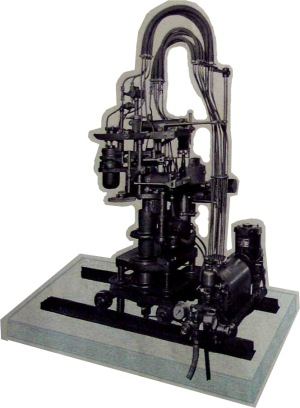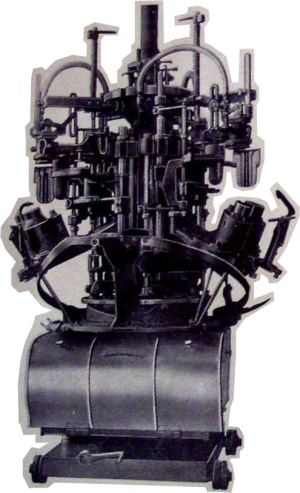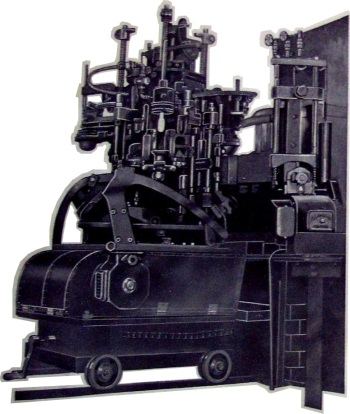“Monish” One-Mould Suction Machine
This machine has two tables — parison mould table and blow mould table.
The parison mould table travels through an angle of 90 degrees from the forehearth to the blow mould table, which is positioned outside the circle of travel of the parison mould.
The parison is transferred to the blow mould by a forward movement of the plunger bracket. After the bottle is blown in the blow mould, the neck ring is opened and the plunger bracket returns to its original position before being moved to the gathering position for another gather.
Whilst the parison mould is travelling from the forehearth to the transfer position, a cover moves over and covers the opening in the forehearth at the covering position, thereby keeping the glass hot for the next gather during the time the parison is being transferred and the bottle blown in the blow mould.
The machine and forehearth are driven by compressed air, approximating 30 cubic feet per minute at 30lbs. pressure, the machine being controlled by an electric timer.
It can be supplied with a Right or Left Hand drive to suit furnace conditions.
The moulds used on this machine are similar to those for the Major machine, and are therefore interchangeable from one machine to the other, without adaptation.
The bottle from this machine is lifted off mechanically, and can be placed on a travelling belt, or dropped down a chute, whichever is preferred.
The following items are supplied free with each machine: —
- Paddle Type Forehearth and Mechanism.
- Combination Electric Driven Timer, with ¼ B.H.P. — D.C. Motor.
- One 2-stage 20 inch Type 8 High Pressure Fan for air cooling of the moulds.
The necessary extra equipment required for this machine, to be supplied by the purchaser at his expense, is as follows:—
- One 7 B.H.P. Motor and Starter for driving the Fan for air cooling of the moulds.
- One Compressor to give 30 cubic feet of free air per minute at 30 lbs. pressure.
- One Vacuum Pump to give 15 cubic feet at 27/28 inches.
- One 7 B.H.P. Motor and Starter for the Compressor.
- One 3 B.H.P. Motor and Starter for the Vacuum Pump.
- One Air Gauge.
- One Vacuum Gauge.
- Also Containers for Air and Vacuum, and
- All necessary Pipe Lines from the Plant to the Machine.
PRICE AND FURTHER PARTICULARS ON APPLICATION.
|



